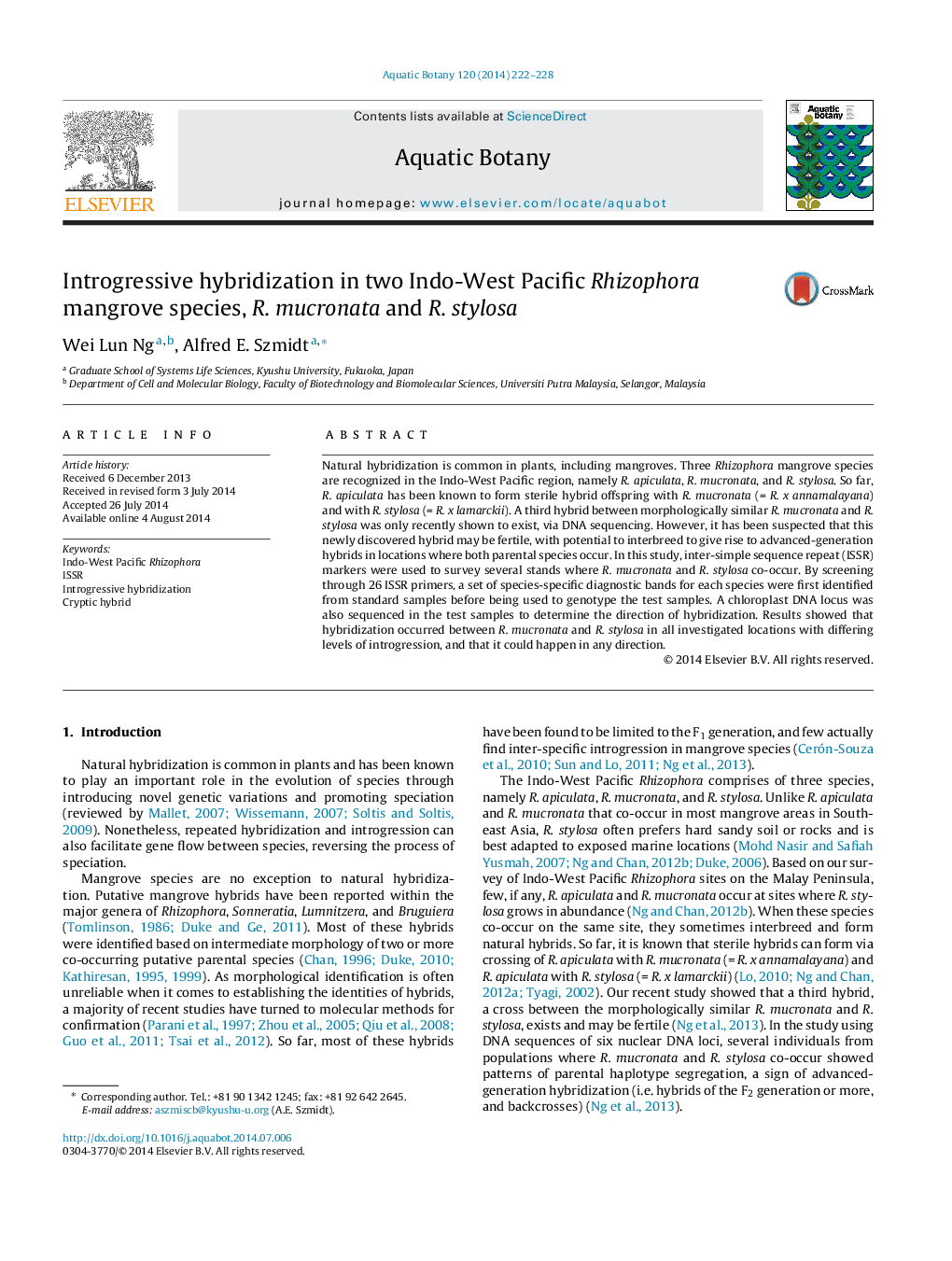| Article ID | Journal | Published Year | Pages | File Type |
|---|---|---|---|---|
| 4527705 | Aquatic Botany | 2015 | 7 Pages |
Abstract
Natural hybridization is common in plants, including mangroves. Three Rhizophora mangrove species are recognized in the Indo-West Pacific region, namely R. apiculata, R. mucronata, and R. stylosa. So far, R. apiculata has been known to form sterile hybrid offspring with R. mucronata (= R. x annamalayana) and with R. stylosa (= R. x lamarckii). A third hybrid between morphologically similar R. mucronata and R. stylosa was only recently shown to exist, via DNA sequencing. However, it has been suspected that this newly discovered hybrid may be fertile, with potential to interbreed to give rise to advanced-generation hybrids in locations where both parental species occur. In this study, inter-simple sequence repeat (ISSR) markers were used to survey several stands where R. mucronata and R. stylosa co-occur. By screening through 26 ISSR primers, a set of species-specific diagnostic bands for each species were first identified from standard samples before being used to genotype the test samples. A chloroplast DNA locus was also sequenced in the test samples to determine the direction of hybridization. Results showed that hybridization occurred between R. mucronata and R. stylosa in all investigated locations with differing levels of introgression, and that it could happen in any direction.
Keywords
Related Topics
Life Sciences
Agricultural and Biological Sciences
Aquatic Science
Authors
Wei Lun Ng, Alfred E. Szmidt,
